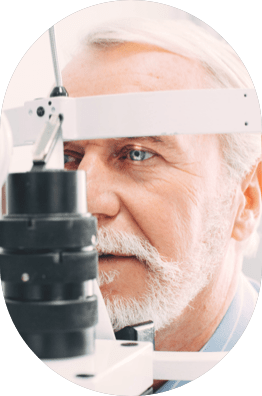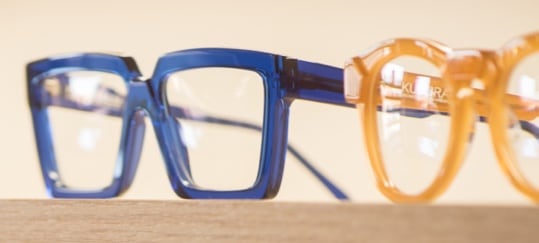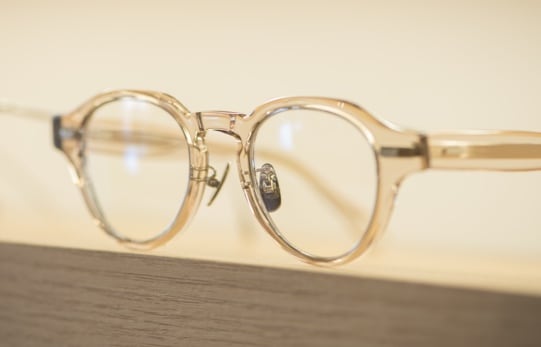Safeguard Your Vision with Early Disease Detection
As we age, we’re more at risk of developing one of the 4 big eye diseases and conditions: glaucoma, age-related macular degeneration, diabetic retinopathy, and cataracts. Nearly 1 in 6 Canadians are living with one of these vision-threatening conditions, but vision loss can be treated or even prevented in 75% of cases.
The key to protecting your vision is getting a regular eye exam that includes diagnostic imaging. These pictures of your retina allow us to detect and diagnose a disease before it starts to affect your vision, giving us the best chance of treating it early.
Don’t wait for new symptoms before booking your next eye exam. Healthy adults should have eye exams every 2–3 years until age 65, when they should have their eyes checked annually.


How We Detect Eye Disease
In your exam, we’ll determine whether you’re at a higher risk of any eye diseases, for example, due to family history, certain symptoms, diabetes, or elevated intraocular pressure. If you are, we’ll want to take some noninvasive diagnostic pictures of your retinas to assess the health of your eyes.
We use high-resolution cameras to take detailed pictures of the structures inside your eye. Our Optovue OCT compares our findings to a large database so we can provide you with the right personalized care for your long-term vision.
Nutrition for Healthy Eyes
A healthy, active lifestyle and good nutrition are essential for the optimal functioning of your eyes. Eating a whole foods diet that includes antioxidant-rich fruits and vegetables, avoiding inflammatory foods, and exercising will all help lower your risk of eye disease and systemic diseases alike.
We’re dedicated to supporting your whole health, which includes providing you with practical nutrition information that is relevant to your life.
Common Eye Diseases & Conditions
We use advanced diagnostic imaging during eye exams so we can detect changes to the delicate structures in your eyes even before you notice changes to your vision.
By detecting eye diseases or conditions early, we’re better able to manage and treat issues before they cause irreversible damage to your vision.
Glaucoma
Glaucoma is a group of eye diseases that causes damage to the optic nerve.
Open-angle glaucoma, the most common type, is caused by increased pressure in the eye. In the early stages of open-angle glaucoma, you likely won’t notice changes in your vision until the disease progresses. It’s essential to see your eye doctor regularly, especially after age 40, for diagnostic imaging and other tests.
To diagnose glaucoma, we test the pressure inside your eye and assess your peripheral vision. We will also dilate your eyes and provide diagnostic imaging as required.
Treatment depends on the type and stage of glaucoma. For open-angle glaucoma, the first line of treatment is medicated eye drops to lower the pressure inside your eye. Further treatment may include surgery to drain fluid from the eye and lower eye pressure.
Age-Related Macular Degeneration (AMD)
Age-related macular degeneration (AMD) is caused by damage to the macula, which is the part of your eye responsible for the centre of your vision.
Dry AMD is the more common type and typically happens slowly over many years as the macula gets thinner with age. Wet AMD is often a result of later-stage dry AMD. It occurs when irregular blood vessels grow in the eye and damage the macula. Both types of AMD can cause vision loss.
Early AMD doesn’t have any noticeable symptoms, so it’s essential to have regular eye exams that include diagnostic imaging, especially if you’re over 55. Later symptoms include blurred or wavy central vision.
In early AMD, disease management is all about living a healthy lifestyle, including good nutrition, regular exercise, and quitting smoking.
If you have moderate AMD, taking AREDS2 supplements may prevent the disease from progressing, protecting your vision.
Cataracts
Cataracts aren’t a disease but rather a condition that results in the clear lens of the eye clouding with age.
If you have a cataract in one or both eyes, you may get by with an adjustment to your eyeglasses prescription. But if your vision changes are affecting your life, you may want to pursue cataract surgery, which can often fully restore vision.
Diabetic Retinopathy
Those with diabetes are at risk of vision-threatening eye damage due to the effects of high blood sugar on the eye’s blood vessels. Diabetic retinopathy can cause vision loss, and it typically develops without any noticeable symptoms.
If you’re living with diabetes, we’ll dilate your eyes and take pictures of your retina to track changes. Initial action includes working with your endocrinologist to ensure your blood sugar is managed effectively, while treatment at later stages can include laser therapy or medicine injections into the eye.
We recommend our patients with diabetes see us at least every 6 months or on a custom schedule so we can catch any diabetic retinopathy as early as possible.
Learn more about our diabetic eye exams.
Book Your Dry Eye Treatment Today!
We’re located in a shopping plaza by Vince’s Market with plenty of convenient parking.

Our Address
- Unit C5–19101A, Leslie Street
- East Gwillimbury, Ontario L0G 1V0
Contact Information
- Phone: (905) 478-2410
- Fax: 905-478-1195
- Email: [email protected]
HOURS OF OPERATION
- Monday: 10:00 AM – 6:00 PM
- Tuesday: 9:00 AM – 6:00 PM
- Wednesday: 10:00 AM – 6:00 PM
- Thursday: 9:00 AM – 6:00 PM
- Friday: 9:00 AM – 5:00 PM
- Saturday: 10:00 AM – 3:00 PM
- Sunday: Closed


















